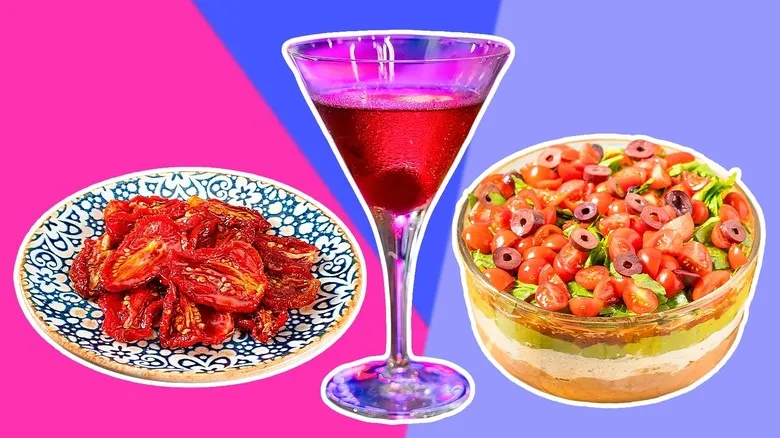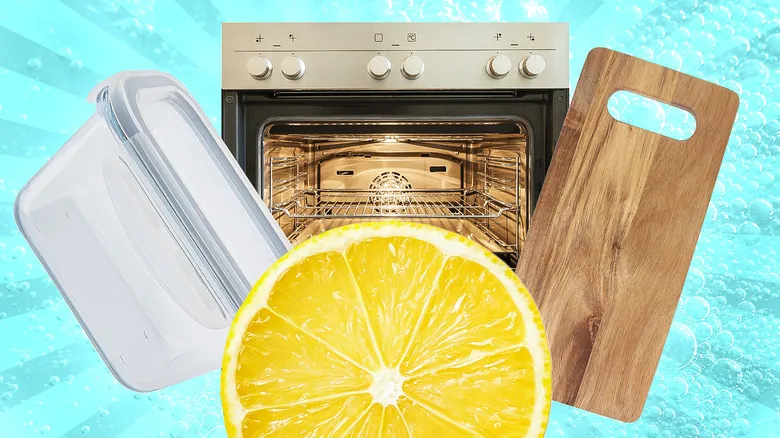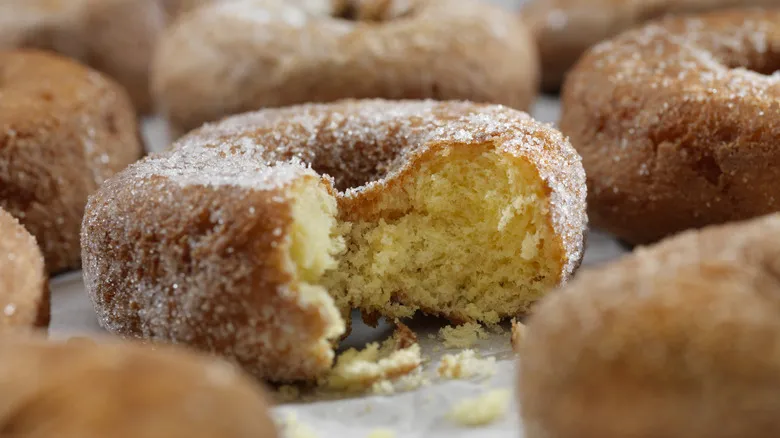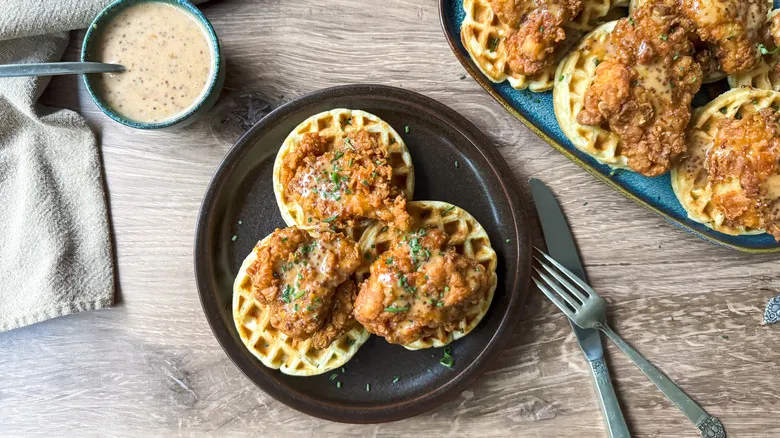Margarine as a healthy alternative to butter
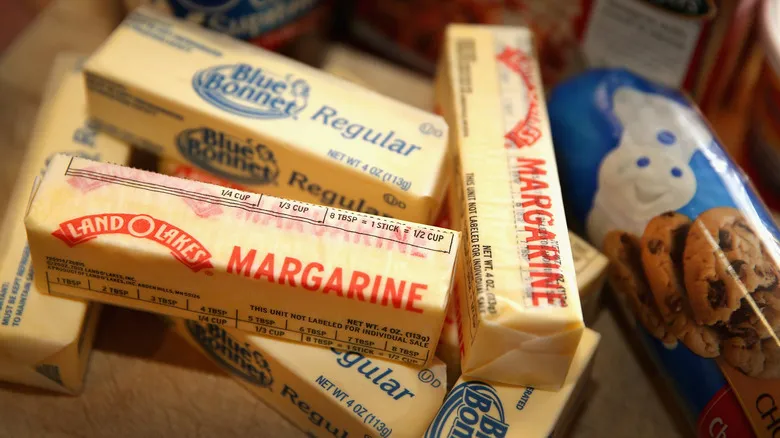
If you were raised in the 1980s, it's likely that you had a tub of margarine in your refrigerator. At that time, the prevailing belief was that saturated fats were harmful while unsaturated fats were beneficial. As a result, many households opted for margarine and other vegetable oil-based spreads instead of animal fat products like butter and lard.
Margarine has a complex history in the United States. It was invented in 1869 as a more affordable and longer-lasting substitute for butter. It gained some popularity in the late 19th century, but faced significant opposition from dairy farmers who lobbied the government to impose heavy taxes on it. It wasn't until 1950 that these tax regulations were lifted, coinciding with a growing concern among health experts about the potential dangers of saturated fat.
During the latter half of the 20th century, margarine sales consistently increased, reaching their peak in the 1980s. However, the 1990s brought a decline in sales as health experts began to sound the alarm about trans fats, especially in products containing hydrogenated oils. Although the Food and Drug Administration banned partially hydrogenated oils in food in 2015, public perception of margarine has never fully recovered.
McDonald's McPizza
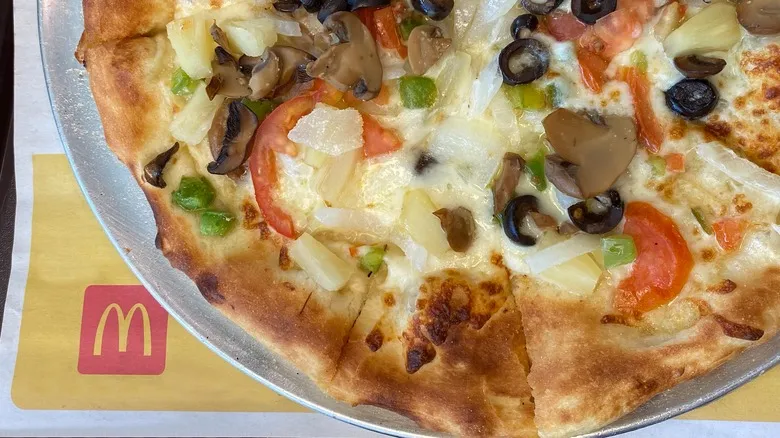
Since its founding in 1940, McDonald's has tried out a variety of menu items. Originally starting as a barbecue restaurant, it eventually shifted its focus to primarily serve burgers and fries. While some experimental dishes made it onto the permanent menu—most notably the Filet-O-Fish—others became discontinued items that we will never see again, such as the McPizza.
During the booming pizza craze of the '80s, it was only natural for McDonald's to want to join in on the action. In the late '80s, the chain introduced family-sized pizzas, followed by individual-sized options. Unfortunately, these pizzas presented some logistical challenges. The main issue was their lengthy cooking time, which conflicted with McDonald's commitment to fast service. The McPizza managed to stick around through the '90s, but by the early 2000s, it had nearly vanished from the menu. Today, the only place you can still find pizza at McDonald's is at Epic McD, the largest McDonald's in the world, located in Orlando, Florida.
Seven-layer dip
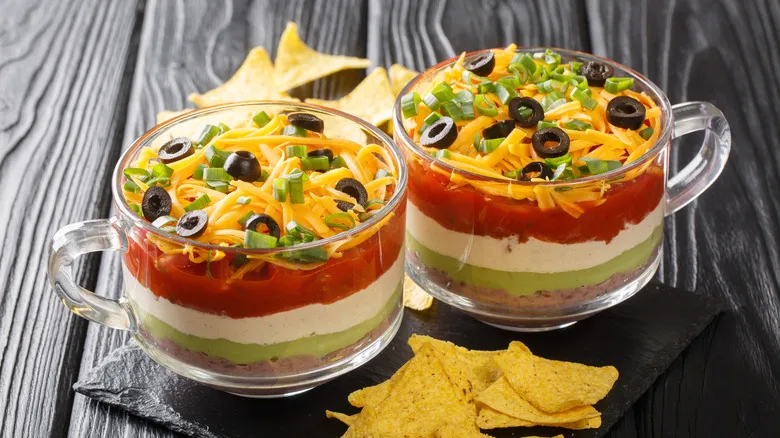
No Super Bowl gathering or potluck dinner in the 1980s was truly complete without a seven-layer dip. While there is some debate about its origins, most accounts trace its roots back to Texas. Some attribute its creation to a woman named Peggy Shoop, who is said to have put her own spin on a six-layer dip recipe in the early '80s. Others argue that this Tex-Mex delight was already a hit in the late '70s. Regardless of its beginnings, it became a quintessential party dish of the '80s.
Typically, seven-layer dip features refried beans, guacamole, sour cream, salsa, cheese, green onions, and black olives. Some variations also include ground beef, shredded lettuce, and sliced jalapeños. Each ingredient is stacked on top of the other, and it’s often presented in a clear dish to showcase the vibrant layers. Served alongside tortilla chips for dipping, it’s easy to understand why this somewhat kitschy classic has stood the test of time — it’s cool, creamy, colorful, and packed with flavor.
Spray cheese in a can
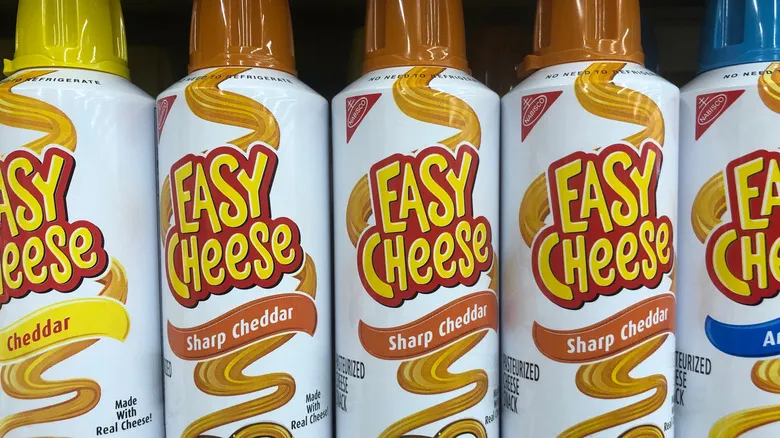
In the 1980s, convenience was a key theme in popular foods, and nothing epitomized that convenience quite like canned spray cheese. With just a simple press of a button, you could dispense vibrant orange cheese, and it could be stored in your pantry for months. Although spray cheese was invented in the 1960s, it gained significant popularity in the '80s when it was rebranded as Easy Cheese, a product that remains available today.
Nabisco is credited with the introduction of canned spray cheese, which first hit the market in 1965 under the name Snack Mate, aimed at increasing cracker sales. At one time, there were seven flavors available, including cheddar, shrimp cocktail, and fried onion. In 1984, Kraft acquired the brand and renamed it Easy Cheese. The eye-catching packaging and the novelty of sprayable cheese appealed to consumers in the '80s, leading Easy Cheese to become a beloved classic. Currently, Easy Cheese is owned by Mondeléz International and is offered in two flavors: cheddar and American.
Sun-dried tomatoes on everything
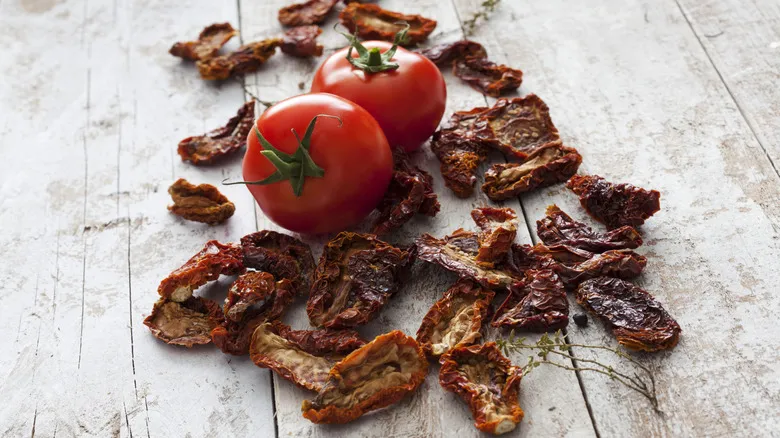
When sun-dried tomatoes began to show up in specialty food shops across the United States in the 1980s, they quickly captured the public's imagination, igniting a sun-dried tomato phenomenon that persisted into the 1990s. Initially, they were simply added to pizzas and salads, but soon they became a culinary staple in a variety of forms, including sun-dried tomato tortillas, crackers, dips, and bagels. Over time, the fervor for these sweet and tangy tomatoes diminished, and they are now viewed as a somewhat nostalgic ingredient.
Sun-dried tomatoes likely originated in Southern Italy, where there is a rich tradition of sun-drying tomatoes and preserving them in oil. This drying method enhances the tomatoes' natural sweetness, while the oil helps to rehydrate them and adds a luxurious texture. During the 1980s, many of the sun-dried tomatoes available in the U.S. were imported from Italy. As their popularity soared, manufacturers began mass-producing them using dehydrators instead of traditional sun-drying methods. Unfortunately, this often resulted in tough, flavorless tomatoes. The decline in quality may have played a significant role in the waning of sun-dried tomatoes as a trendy food item.
High-caffeine colas
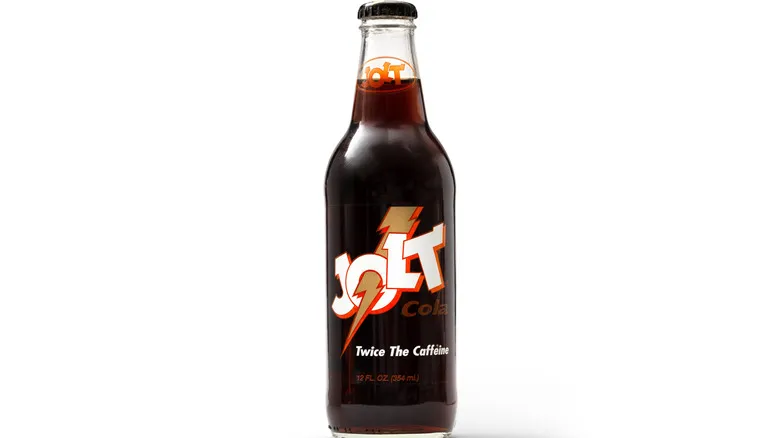
Only in the 1980s could a soft drink brand promote itself with the slogan, "All the sugar and twice the caffeine," and attract thousands, if not millions, of enthusiasts. We're referring to Jolt Cola, the electrifying beverage that packed around 10 teaspoons of sugar and 71 milligrams of caffeine in each 12-ounce can. Launched in 1985, it quickly became the preferred choice for those seeking a quick energy boost or help staying awake into the early morning hours.
The masterminds behind Jolt Cola were a father-son duo, Joseph and Carl Joseph (C.J.) Rapp. They were frustrated with major soda brands like Coca-Cola and Pepsi shifting towards artificial sweeteners and lighter soda options. Jolt Cola aimed to revive the nostalgia of the past when rich, full-bodied sodas were in vogue. The outcome was a high-energy, sugary drink that stayed just below the legal caffeine limit. Jolt Cola enjoyed popularity throughout the '80s and '90s, but eventually saw a decline; the company declared bankruptcy in 2009, and the drink was completely discontinued in 2019.
Fast food buffets
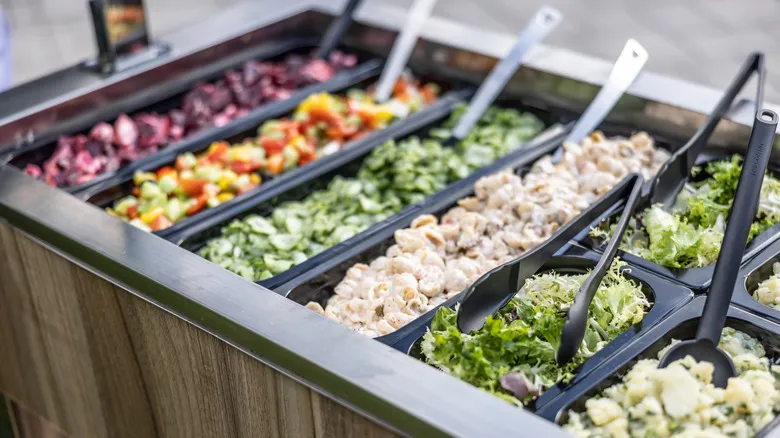
In the mid-1940s, Herb McDonald launched the Buckaroo Buffet at El Rancho Vegas with the intention of encouraging patrons to linger longer in the casino. Unbeknownst to him, this initiative would ignite a culinary trend that would expand dramatically. By the 1980s, Las Vegas buffets were no longer the sole venues for indulging in all-you-can-eat feasts. Buffet chains like Sizzler and Ponderosa surged in popularity during this era, appealing to diners with their unabashed offerings of abundance. Even fast food establishments joined the buffet phenomenon during this lavish decade.
You might be surprised to learn that several well-known fast food brands experimented with buffet options in the '80s. Reddit users fondly recall the buffet selections from Taco Bell, Pizza Hut, and McDonald's from that time. There are even whispers that some KFC locations in the U.S. still provide buffet services. However, the most nostalgic of all might be the Wendy's Superbar, an impressive fast-food buffet that featured salads, pastas, build-your-own tacos, and desserts. Priced at around $2.99 for lunch and $3.99 for dinner, it was an incredible bargain.
Neon-colored cocktails
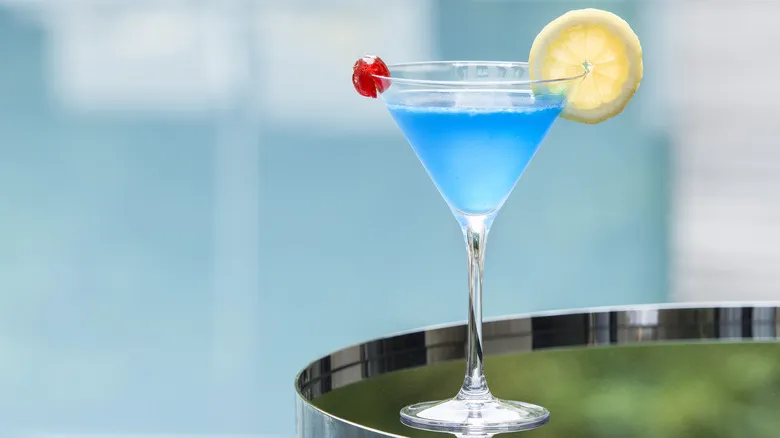
Neon hues dominated the 1980s, extending beyond just fashion. Trendy drinkers enjoyed vibrant cocktails that were hard to miss. If you walked into a bar during that decade, it was common to find bartenders concocting drinks with vividly colored liqueurs like blue curaçao and crème de menthe. Many cocktails featured lively juices such as orange, cranberry, and pineapple. Even the shots were visually striking, often showcasing multi-colored layers, reminiscent of B-52s and Slippery Nipples.
As you might expect, the colorful cocktails of the '80s were often quite sweet. A prime example is the beloved Woo Woo cocktail, made with vodka, peach schnapps, and cranberry juice. This was also the time when pre-mixed drinks gained popularity, with margaritas being blended in slushie machines using limeade and piña coladas sold in cans. Fortunately, the craft cocktail movement was on the horizon. By the late '80s, dedicated bartenders began advocating for a revival of fresher, higher-quality ingredients. However, it wasn't until the 1990s that the modern craft cocktail movement truly took off.
The Beverly Hills Diet
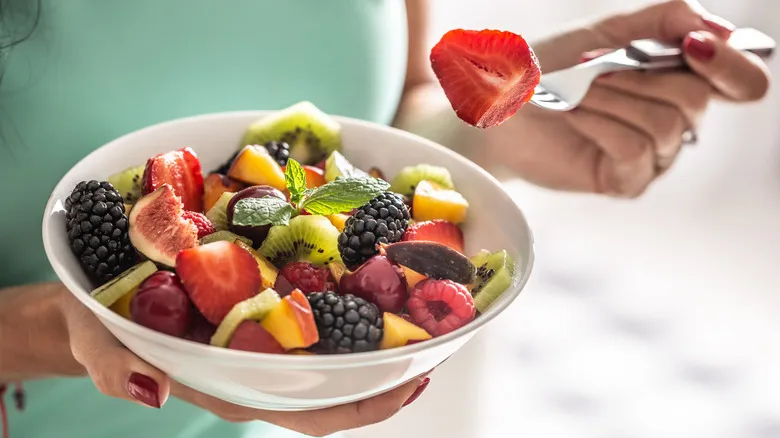
You might assume that with the prevalence of sugary beverages and processed foods in the '80s, health wasn't a priority. However, that couldn't be further from reality. This was the decade when aerobics, fat-free products, and trendy diets surged in popularity. One of the most well-known diet books of the era was "The Beverly Hills Diet," released in 1981, which quickly became a bestseller.
The book's author, Judy Mazel, had no formal training in nutrition or medicine. Her interest in weight loss sparked during her recovery from a broken leg, leading her to create a diet based on her personal research and experiences. Her approach involved consuming only one type of food at a time, starting with fruit for the first 35 days, followed by careful combinations of proteins, carbohydrates, and fats. Unsurprisingly, many health professionals criticized the diet for its lack of scientific foundation. Nevertheless, this did not deter thousands from purchasing the book or numerous celebrities from promoting it.
Hating Brussels sprouts
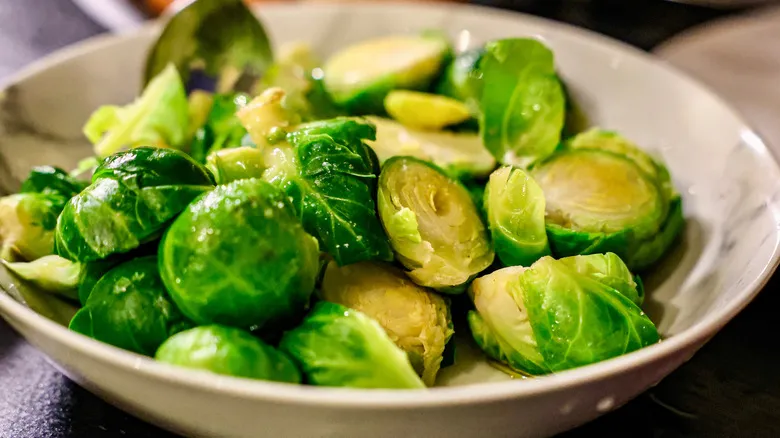
Few foods faced as much criticism in the 1980s as Brussels sprouts. Many individuals who grew up during that time still harbor a dislike for them today. The primary complaint back then was their intense bitterness. However, these leafy greens are currently experiencing a resurgence, and it's uncommon to hear complaints about their sharp flavor. A significant part of this shift can be attributed to scientific advancements.
In the 1990s, a Dutch researcher named Hans van Doorn discovered the chemical compounds responsible for the bitterness in Brussels sprouts. His findings prompted seed companies to crossbreed various Brussels sprout varieties to produce vegetables with reduced levels of these compounds. As a result, many of today’s Brussels sprouts are far less off-putting than those from the '80s and earlier. If the bitter taste of Brussels sprouts deterred you in the past, it might be worth giving them another try. You could discover a new favorite vegetable.
Taco Bell burgers

In the highly competitive fast food industry, chains must continuously innovate to stay relevant. This often involves introducing new products to attract new customers and retain loyal fans. The 1980s were especially fierce for fast food establishments, with many launching a variety of new menu items to outshine their rivals. Taco Bell was no exception to this trend. One item from Taco Bell's '80s menu that many people hope will return is the Bell Beefer.
Picture a taco from a fast food restaurant, but shaped like a hamburger—that's essentially what the Bell Beefer was. It consisted of ground beef, shredded lettuce, diced onions, and mild salsa all nestled in a burger bun. Interestingly, a chili burger was one of the original offerings when Taco Bell first opened its doors in 1962. In the 1970s, this burger was rebranded as the Bell Burger and eventually became the Bell Beefer. The reason for the Bell Beefer's discontinuation remains a mystery, but it’s likely that poor sales contributed to its removal from the menu.
Novelty breakfast cereals
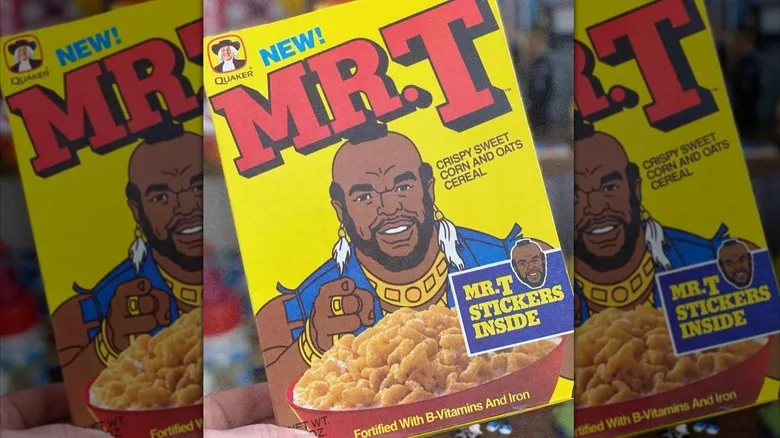
The 1980s were an incredible era for children, thanks to a plethora of fun foods created specifically for them. Breakfast cereals were especially thrilling—not just because they were sugary and vibrant, but also due to their connections to pop culture. This was the decade when food companies started crafting novelty cereals inspired by beloved characters from cartoons, movies, and video games. It's no wonder that impressionable kids of the '80s eagerly devoured them.
Prior to the '80s, many cereals featured colorful cartoon mascots like Tony the Tiger and Toucan Sam, but these characters weren't ones that kids were actually watching on television or in films. That shifted in the early '80s when General Mills began securing licensing deals to create cereals based on popular fictional figures. Some of the standout hits included Strawberry Shortcake, E.T., and Pac-Man cereals. As the decade progressed, children could enjoy cereals themed around a diverse range of characters, such as C-3PO, Batman, Mr. T, and the Teenage Mutant Ninja Turtles. Although those days have passed, dedicated fans of these discontinued cereals can still stumble upon some vintage cereal boxes from that time.
Squeezits (and other ultra-sugary drinks)
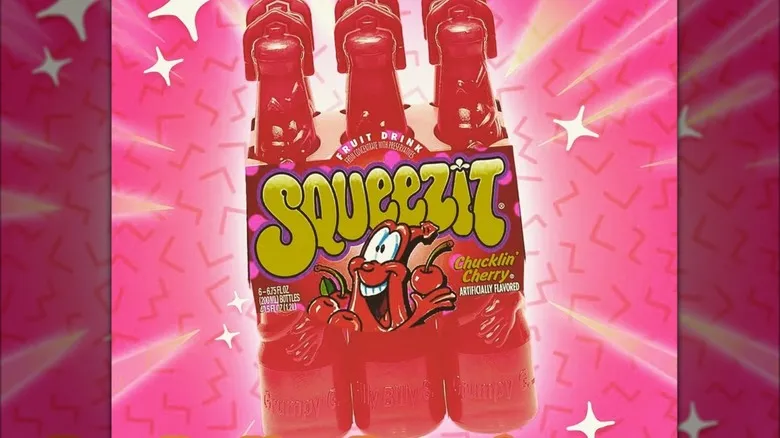
If there was one beverage that every child craved in their lunch box during the late '80s, it was Squeezits. These fruit-flavored drinks were groundbreaking in several respects. Firstly, they were the first fruit beverages to come in squeezable plastic bottles. Moreover, they didn’t need a straw; all you had to do was twist off the cap and gulp down the sugary mix. Additionally, once the drink was finished, the bottles could be refilled with water and repurposed as squirt guns.
While Squeezits were distinctive in many ways, they had one thing in common with numerous other children's drinks of that era: they were loaded with sugar. Interestingly, many parents in the '80s didn’t seem to mind sending their kids to school with drinks that were essentially sugar bombs. Does anyone remember Capri-Sun juice pouches, Hi-C Ecto Coolers, or PepsiCo's fruit-flavored soda known as Slice? If it was sweet, syrupy, and had even a slight connection to juice, it likely became a hit beverage in the '80s.
Over-the-top bubble gums
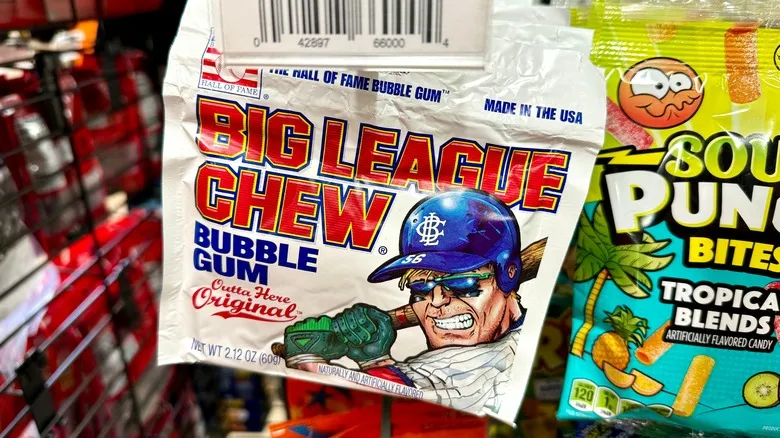
Chewing gum was already a familiar sight in America during the 1980s. It had been commercially available since the 1840s, and by the mid-20th century, it was offered in a wide array of flavors. However, the '80s were characterized by a fascination with innovative food products, and bubble gum was ripe for reinvention. Candy manufacturers began experimenting with various flavors and forms of bubble gum, leading to some surprising results.
One standout product from the '80s was soda bubble gum. This gum, filled with a liquid center, came in popular soda flavors such as Dr. Pepper, 7-Up, and A&W root beer. When bitten into, the soda center would burst forth, delivering a gooey explosion of flavor. Although the taste was fleeting, the novelty was what truly mattered. Another memorable product was Big League Chew, which launched in 1979. Designed to resemble chewing tobacco, it was packaged in a pouch containing a hefty portion of shredded pink gum. Many kids from the '80s likely recall the jaw fatigue that came from attempting to chew through an entire pouch in one go.
Sizzlean
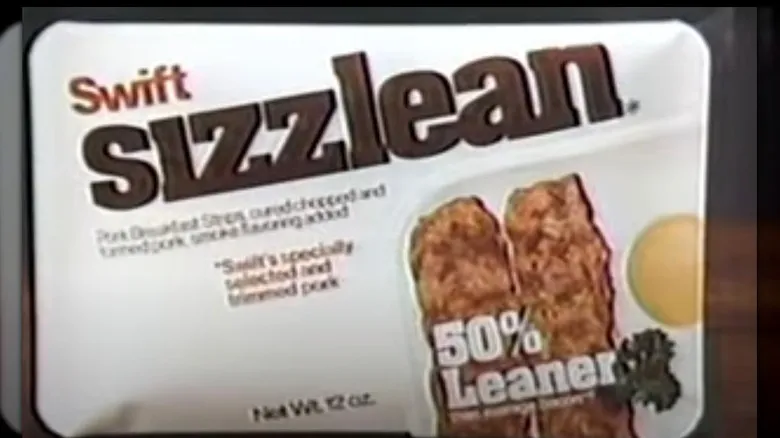
Just as butter faced criticism in the '80s for its high saturated fat content, bacon also found itself under scrutiny. Sizzlean emerged as the ideal solution for consumers wary of fat. Developed by Swift & Co., this bacon substitute was crafted from pork shoulder rather than pork belly and was promoted as being 50% leaner than traditional bacon. A beef variant was also available. You might remember the catchy Sizzlean commercials featuring jingles like, "Don't bring home the bacon. Think lean. Bring home the Sizzlean!" or the slogan, "Move over, bacon, there's something meatier!"
Overall, Sizzlean wasn't awful; it just didn't quite measure up to bacon. Many people noted that it never achieved a crispy texture, regardless of cooking time, and had a somewhat chewy consistency. One Reddit user even compared it to "bacon-shaped Spam." Nevertheless, Sizzlean remained on store shelves throughout the 1980s and into the early 2000s. The reasons for its discontinuation are unclear, but if we had to speculate, it might be due to declining sales as the low-fat trend of the '80s and '90s faded.
Recommended
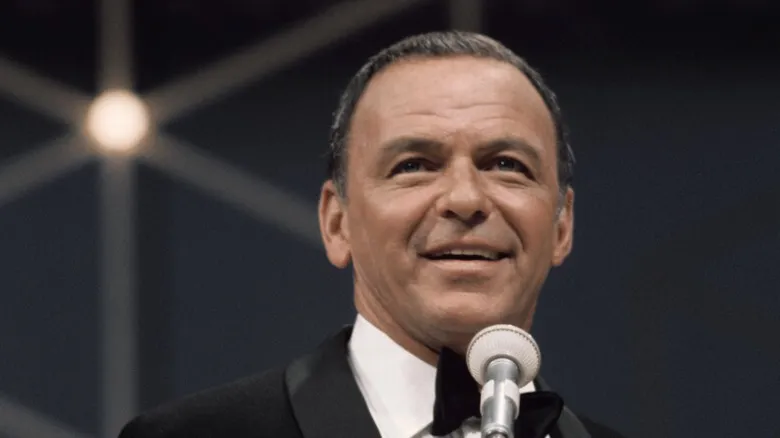
The Childhood Classic Dish Frank Sinatra Had For His Last Meal
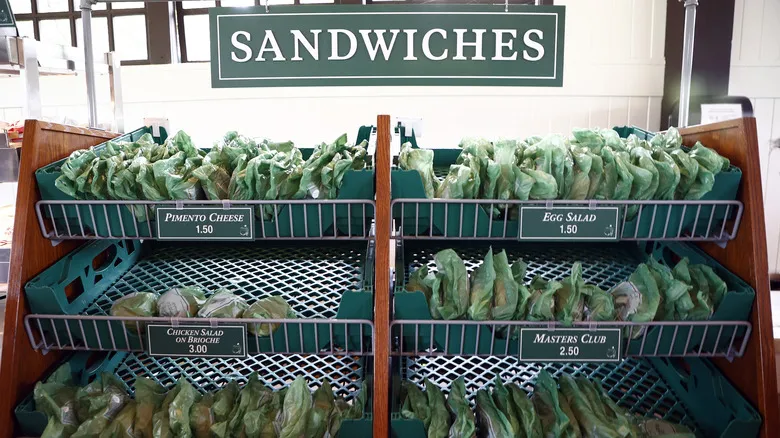
How Georgia's Official State Sandwich Became A Staple Of Masters Golf Tournaments

How The Peter Piper Pizza Chain Restaurant Was Built On Games And Family Fun
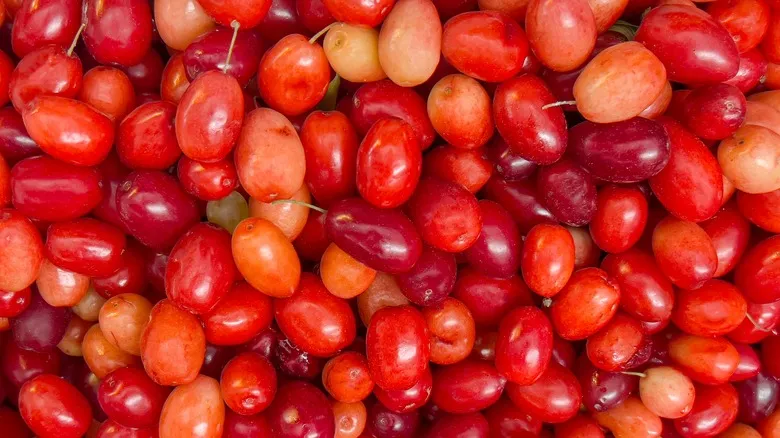
The State That Grows The Most Cranberries
Next up

